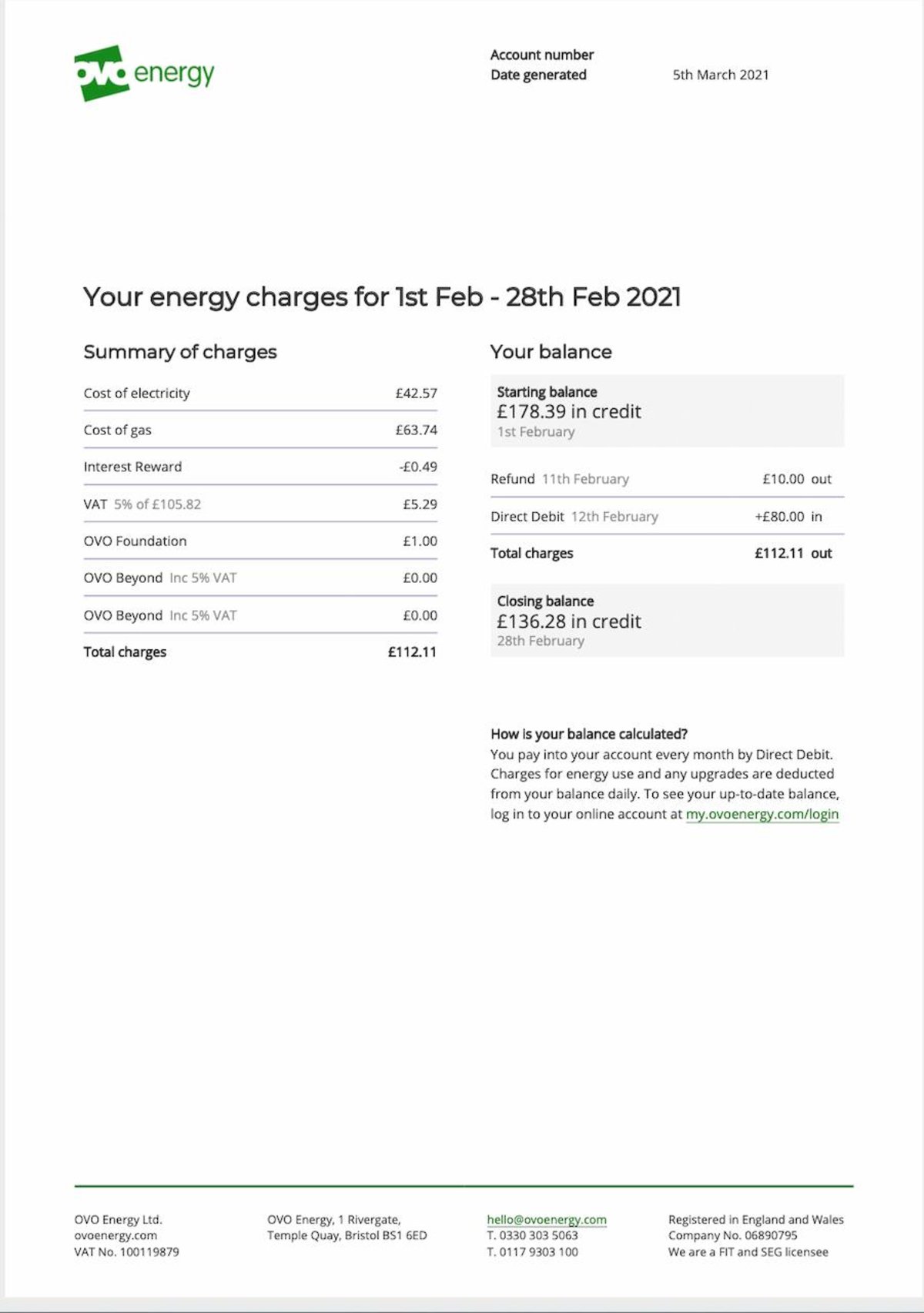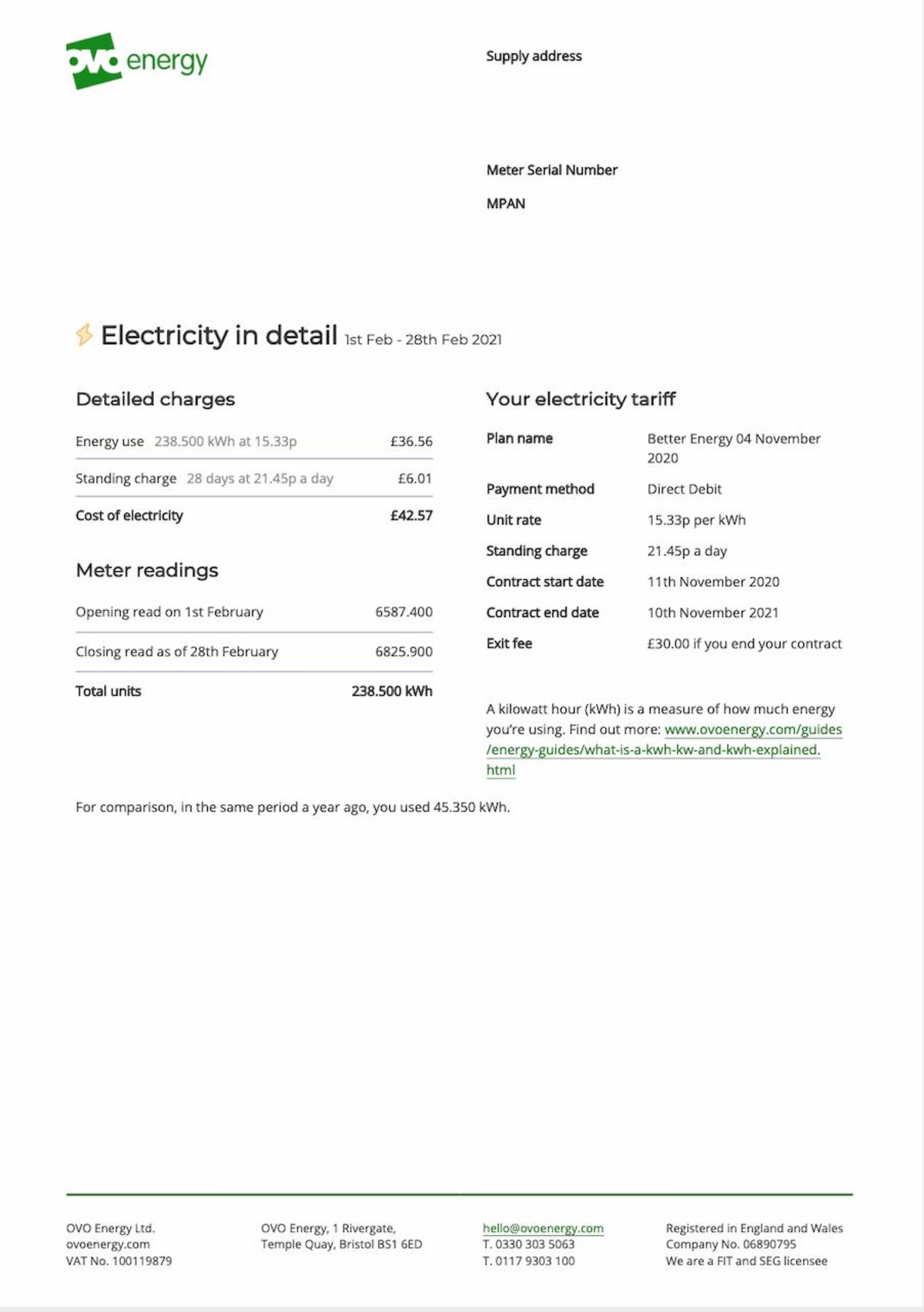
How billing works: Common questions
Learn everything you need to know about how billing works, with information on billing periods, how your bill is calculated, and more.
Billing works like this. You’re charged for the energy you use in each billing period. This is either taken from your set payment once a month, or you pay when you get your bill. And any fixed charges (like daily standing charges) are added on.
Here’s more about the billing process.
What’s a billing period?
A billing period starts on the day your tariff starts, and runs to the same date on the following month.
Your next bill is generated a few days after the end of your current billing period. It’ll show your opening balance, new charges, and payments during this billing period, as well as your new closing balance.
Here’s an example:
Your billing period ends on the 19th of each month
You log in to your account on 31 July
On the Billing screen, you’ll see a breakdown of your costs for this billing period (20–30 July)
How often do you get bills?
You should get a bill from us once a month. This is now the case for all OVO customers.
If you pay by Direct Debit, you can get your statements quarterly – though you still make payments monthly.
Can you choose to get bills quarterly, instead of monthly?
We’ve now stopped offering quarterly bills. By getting a bill once a month, instead of once a quarter, you can:
Keep track of your energy use and see how it changes, month to month
Budget for energy with smaller, more regular payments spread across the year
Help avoid larger balances building up on your energy account between bills
Our team is here to support you if you’ve got any questions about not getting quarterly bills.
How your account balance works
The amount of energy you use changes each month. If you pay by Direct Debit, it’s normal for a credit balance to build up in your energy account over summer. This is when your energy use is usually lower.
This credit can help pay for your energy in winter, when most homes use more. It helps you spread your energy costs over time.
Your account balance is like a pot of money. Here’s how that works:
Set payments go in, and different amounts come out.
Each month you’ll get a statement for the energy you’ve used – and the amount you owe is taken from this pot of money.
Some months, like in summer, your set payment might be more than the cost of the energy you've used. This will leave your account in credit. In winter, it's likely your set payment will be less than the cost of the energy you’ve used.
This means your energy costs are spread evenly over the year.
Find out more about how your account balance works
How your bill is calculated
Here’s a list of payments you’ll see going in to your account:
Direct Debit payments made from your bank account
Any top-up payments you've made
You’ll see these on your bill, and on the Billing screen in your online account, too
The aim is to make sure you have credit for 1 month’s payment in your OVO account by the end of March. This is to help cover any change in your home energy use over the course of the year.
For new customers, this only comes into effect once you’ve reached March. When you first join, the aim is to make sure you have no balance left to pay after 1 year.
Your Direct Debit payment amount will be regularly reviewed to make sure it still covers your home’s energy use.
Meter readings help make your bills accurate
Sending regular meter readings means your bills will be as accurate as possible. They make sure you only get billed for the energy you're actually using.
If you have a smart meter, there’s usually no need to give regular readings, as they’re sent automatically.
Find out more about smart meters, and how to read your gas and electricity meter.
What’s included in your bill
We do our best to make your gas and electricity bills as easy to understand as possible – but we realise there’s often a lot of information to take in!
Your bill will include some of the following key points:
The name of your current tariff – for instance, our tariffs have names like “Better Energy” and “2-Year Fixed”.
Your MPAN number – which stands for Meter Point Administration Number. This is unique to your home, and identifies your supply.
Your energy use, in both kWh, and pounds and pence
Your standing charges – which includes the cost of the pipes and power lines, and maintenance of your meters.
Your unit rate – ie. the cost for each unit of energy (kWh).
Your starting and closing balance – based on that ‘pot of money’ we mentioned earlier. This shows how much is left/owing after we’ve taken out the total charges from your latest bill.
Here’s an example of what your bill could look like:
Page 1:

Page 2:

Find out more about how to read your energy bill, with our handy step-by-step guide.
Popular questions about billing
Do I have to pay an estimated electric bill?
If you haven’t given a meter reading recently, your supplier might use your average energy usage to calculate your bill. But you don’t always need to pay an estimated bill. Instead, contact your supplier to give an up-to-date meter reading, and ask them to send you a new bill.
How do I make sure I’m billed correctly?
Your bills might be based on predictions of how much energy you’ll use, rather than meter readings. You can take meter readings yourself, to make your bills more accurate.
A smart meter will send readings for you automatically. Find out more about smart meters.
What does debit mean on a bill?
Debit means there’s a balance to pay on your account. This might be because your energy use has gone up, and your Direct Debit payments aren't high enough to cover it. If we need to increase your Direct Debit payments, we’ll let you know.
What does credit mean on a bill?
If your balance is in credit, it means there’s some extra money in your account. This credit can be used during the winter months, when your energy use usually goes up. We make sure you’re paying the right amount each month to spread your energy costs over the whole year.
What to do if I’m struggling to pay my energy bill
If you’re worried about your payments changing or you can’t afford them, please speak to our team. We can make sure you get financial support that’s tailored to you and your situation. There are many options available for anyone who needs help. To get in touch with our team:
Sign up to our online tool at ovoenergy.com/payment-support and we can find the best plan for you.
Call us on 0800 408 6615. We’re here Monday to Friday, 9am and 5pm, and 9am to 2pm on Saturday.
Talk to us online at Monday to Friday, 8am to 6pm, and 9am to 2pm on Saturday.
Another option is to have a Pay As You Go meter installed. You can pay off any balance gradually, while paying for your current energy use too.
Find out more about ways to get financial support.
Can I print out my bill?
If you have an online account, you can download and print your bills from your online account. Choose this option by going to 'Billing history' on the side navigation panel, then click the 'Download this bill' link. To see your past bills, click 'View billing history'.
Any further questions?
We understand that the billing process can be confusing sometimes – so if you still need a hand, don’t hesitate to get in touch. There’s more help available in the OVO Forum. And if you don't find the answers you need, feel free to ask a question, and one of our forum users will be happy to help!
Ask the OVO Forum
Can’t find an answer? Try asking our helpful OVO community.